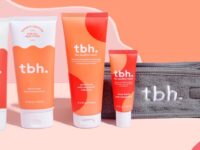
Australia’s FMCG giants have long relied on retailer data to understand their consumers, but in recent years many have wised up to the power of forging their own connections.
Now the Covid-19 pandemic has further disrupted the way consumers engage with brands, with digital consumption skyrocketing due to everything being taken online.
According to a GWI Coronavirus Research report for May 2020, almost 1 in 2 consumers plan to shop online more frequently after the outbreak. The global study found that 46 per cent of consumers plan to do more online shopping, up 3 per cent from the previous month.
While brands are already leveraging the power of social media, many are focusing their energies in the wrong places, according to Billy Loizou, Vice President Go-to-Market APAC, at Cheetah Digital.
“A lot of FMCG brands are focusing on third-party data sources, like cookie tracking … but by 2021, Google, Firefox, and iOS devices, are going to eliminate the usage of cookie tracking, meaning no brand can use third-party data sources for marketing,” Loizou says.
“A lot of brands are freaking out, that’s been their whole advertising strategy.”
Loizou says brands now need to focus on gathering ‘zero-party’ data as part of a consensual, permission-based marketing strategy.
And with Covid-19 prompting major FMCG brands such as PepsiCo, Heinz and P&G to explore DTC, there has never been a better time to get a handle on consensual data collection and marketing.
“When the roller doors shut in March, there was a huge shift to accelerate and stand up direct-to-consumer (DTC) e-commerce very quickly in order to preserve volume and revenue. We saw direct-to-consumer brands shift from an idea to a strategy in very quick action,” Loizou says.
PepsiCo is one such brand, setting up its DTC offering, Snacks.com, from concept to execution in less than 30 days.
So how should brands go about collecting ‘zero-party’ data? It starts with establishing what type of information you need from the consumer and why.
“Consumers want to know why you’re engaging with them; consent is really important. Secondly, they want to know what data you want. If you don’t explain why, there’s no reason why the consumer will give you their data,” Loizou explains.
Critically, consumers need to understand what’s in it for them.
“We call it the ‘value exchange’. The first thing a customer is asking themselves is ‘’what’s in it for me? There has to be some form of exclusivity, some form of gamification or interactivity. Consumers are receiving something — a discount, an experience, exclusive access, a giveaway, etc. — in exchange for their data.”
Progressive profiling of consumers can be as simple as quick quiz activities to establish a consumer’s taste preferences, in order to make recommendations, Loizou explains.
“People like that. The brand has made an effort to understand their needs, and personalise the experience to suit them,” he says.
“Where these direct-to-consumer experiences become really cool, is when there is exclusivity, something that can’t be purchased anywhere else but direct from the website. That gives the consumer a reason to shop with them, versus an alternative.”
Loizou points to Living Wine Labels by 19 Crimes as a prime example of how brands can use technology to interact with the consumer, while also collecting data.
The consumer holds up their phone to the wine bottle, the camera scans the label, and it creates an augmented reality experience that consumers can interact with.
“The cool thing about that is it automatically captures data. It gives the brand a tangible way to connect with the end consumer and build a relationship from tasting notes, recipes, whatever it may be.”
American shoe brand Vans is also proving that data collection can be engaging and rewarding for consumers.
Vans gets to know consumers by asking fun, engaging questions about their likes and dislikes.
“They profile their entire audience, and they give consumers points for answering these questions, or for watching a video. Customers can then use those points to earn discounts.”
Loizou says brands need to work on building a relationship with the consumer over time, as opposed to collecting a lot of information at once.
“Transactions plus interactions, equals a loyal customer,” Loizou says.
Cheetah Digital is a cross-channel customer engagement solution provider that powers direct-to-consumer relationships across the entire customer lifecycle and works with global FMCG giants like Reckitt Benckiser and Kelloggs.
Start unlocking direct-to-consumer relationships, click here.












